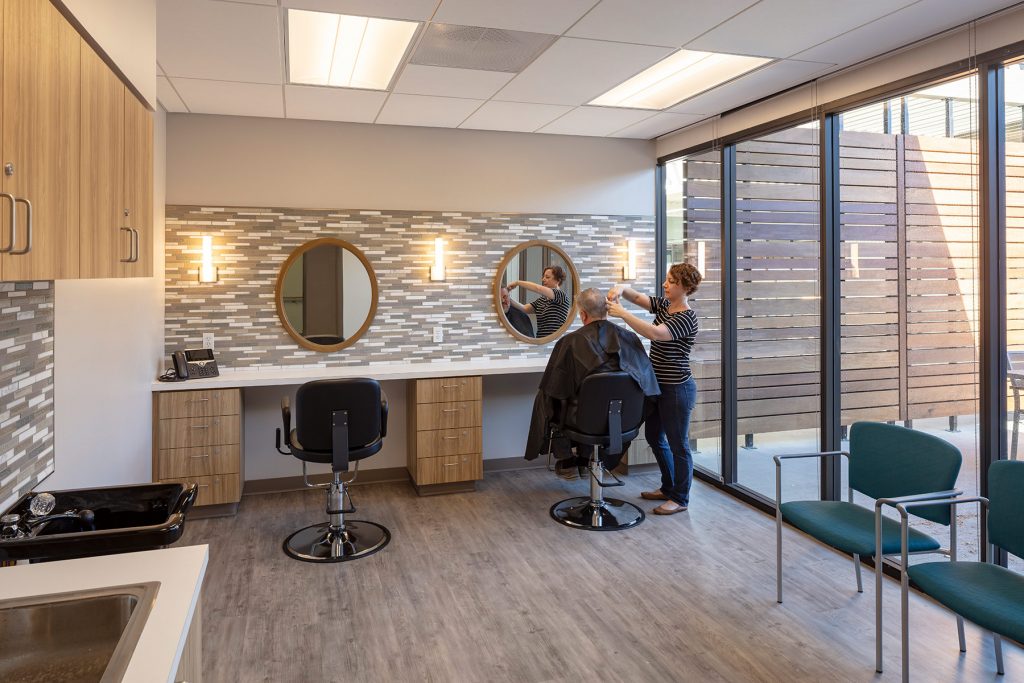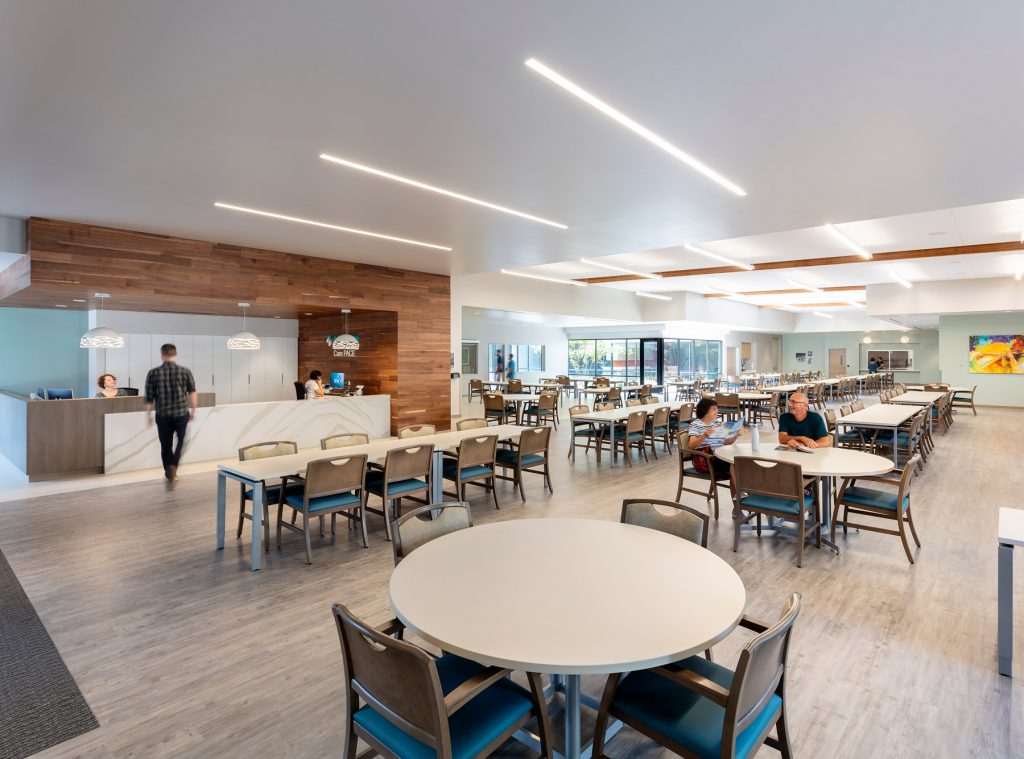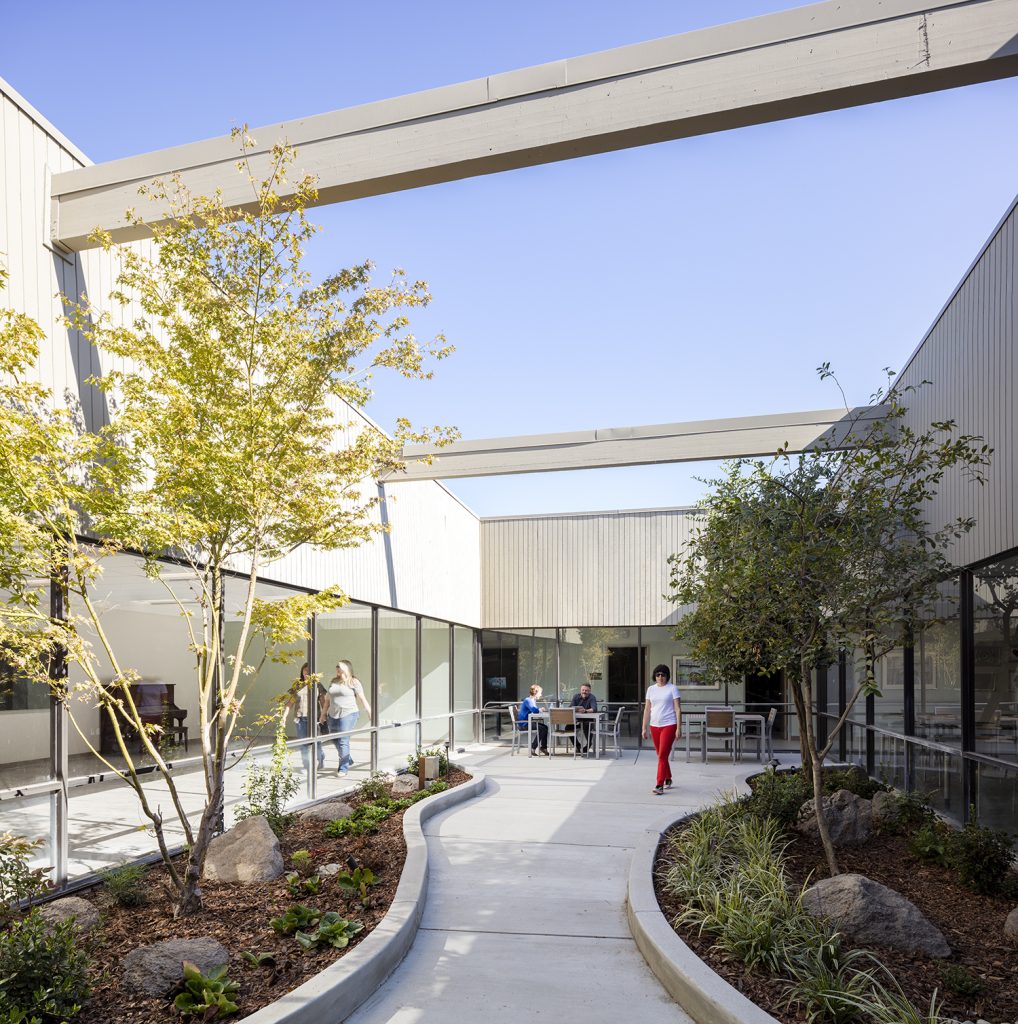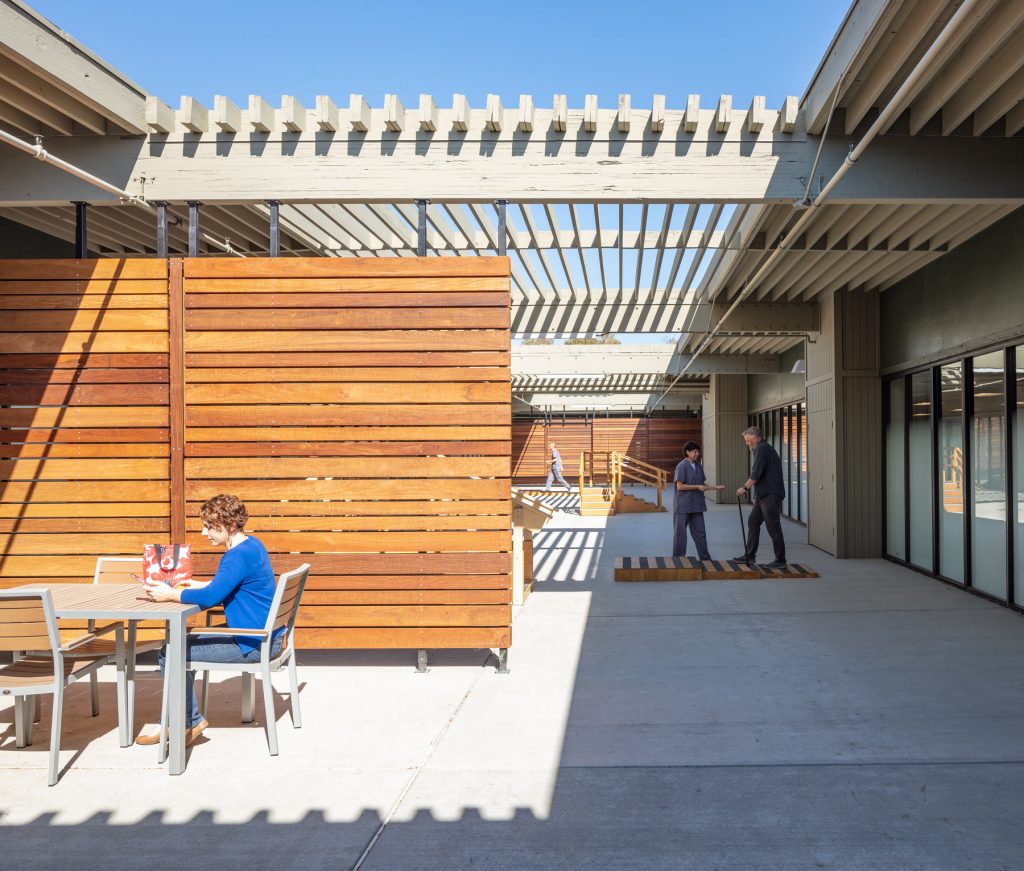Allowing Seniors to Age in Place
December 21, 2018
From the December 2018 web issue of
Comstock’s Magazine.
By Jessica Laskey
New senior day center offers increased options for elderly
Sutter Health opened its new state-of-the-art Senior Care PACE medical and recreational complex in the River District on Dec. 10. The 45,000-square-foot space can accommodate a total of 1,000 patients per day.
With the growing need for senior care in the region, the new center couldn’t have come at a better time. According to the Population Reference Bureau report “Aging in the United States,” the number of Americans ages 65 and older is projected to more than double, from 46 million today to over 98 million, by 2060. This wave of aging could fuel a 75-percent increase in the number of Americans ages 65 and older requiring nursing home care — to about 2.3 million in 2030.
For more than 25 years, Sutter’s SeniorCare PACE has provided Sacramento County residents ages 55 and older the option of a complete health plan that doesn’t just address medical concerns. The national nonprofit Program of All-Inclusive Care, or PACE, cares for the “whole person” with a team of doctors, nurses, therapists, social workers, aides and drivers who collectively provide medical services and home health care, as well as recreational activities.
PACE services allow patients to age in place, meaning they can stay in their homes as they grow older with the help of home health care, as well as transportation to and from activities and appointments, instead of opting for full-time residence at a nursing home.
To qualify for PACE, an individual 55 years of age or older must meet the requirement for skilled-nursing home care as determined by an interdisciplinary team assessment and certified by the California Department of Healthcare Services; reside in the service area (county and zip); and be able to live in the community without jeopardizing his or her health or safety. PACE is also a health plan option for those on Medi-Cal and Medicare.
“PACE is about giving seniors who are sick enough to be in a nursing home the option to maintain their independence,” explains Philip Chuang, vice president of strategy and business development for Sutter Care at Home, which oversees SeniorCare PACE. “We want our clients to be able to continue living their lives with the healthcare piece made easier.”
Despite the many benefits and services of the PACE program, Sacramento’s program has operated largely under the radar, currently serving only about 300 patients across the county. Sutter — the only PACE provider in the county — is working to increase enrollment. The new facility consolidates the operations of Sacramento’s two other PACE centers, located on Franklin Boulevard and U Street.
After securing the River District site — a former office park — Sutter employed local architecture firm Dreyfuss + Blackford to complete the design. The new, light-filled center boasts a dedicated memory care space; arts and crafts space; 11,000 square feet of secure outdoor space, including areas for recreation and physical and occupational therapy; a beauty salon; a rehabilitation gym; and a library/technology room where seniors can relax with the newspaper or learn how to get online.
Current PACE patients had a say in the interior design, as evidenced by the photos of musical acts like Elvis and the Beatles that line the walls alongside colorful abstract artwork by Roseville-based artist Margarita Chaplinska — a far cry from the muted landscapes of traditional health centers. “They’re going to be here all the time,” Chuang says. “They told us they wanted a place with energy and beauty, so that’s what they got.”
Another critical part of the PACE program is its ability to address a wide range of patient needs, “meeting each senior where they are,” as Chuang puts it. While some simply crave community and stimulation (which is where art classes, group exercise sessions and frequent bingo games come in), others require more acute care, which is why the center also includes an on-site medical suite with access to primary care physicians; dental, vision, podiatry and audiology services; as well as rehabilitation, restorative therapy and memory care.
“The Sutter PACE center is a beautiful space with excellent enrichment and recreational opportunities that will extend the lives and the enjoyment of life for our senior population,” says Sacramento Councilman Jeff Harris, who was instrumental in helping Sutter select the centrally-located River District as the site for the new center. “We know that environment is critical to beneficial health outcomes for seniors and that isolation leads to poor health.”
Reducing isolation is a key component of PACE. The Population Reference Bureau’s aging study shows that 27 percent of women ages 65 to 74 lived alone in 2014 — a statistic that jumps to 42 percent among women ages 75 to 84, and to 56 percent among women ages 85 and older. Add to those numbers the fact that many medical issues make mobility difficult — if not outright impossible — and you’ve got a recipe for many seniors’ twilight years being spent alone.
PACE not only provides a way for seniors to avoid isolation in their later years, it also provides much needed support for the family members on whom the burden of care often falls.
“People don’t often consider the community aspect of caring for an elderly loved one,” says Clint Allison, whose father, Bob, has been a PACE patient for the past three years. A stroke in 2010 left Bob requiring round-the-clock care that, at the time, fell entirely to his family to provide.
“My dad was a different person after the stroke and he wasn’t getting enough stimulation to help him relearn skills — his brain was continuing to break down,” Allison says. “We noticed an immediate improvement once we got my dad into PACE. Now he’s meeting friends, taking classes and doing things I’ve never seen him do. To be able to see him improving at this time in his life is a godsend.”
Allison is especially appreciative of the transportation aspect of the program. PACE patients are picked up at their homes by professional drivers and transported to the day center, on field trips to stores and activities like River Cats minor league baseball games, or to medical appointments around the city — and dropped off at home at the end of the day.
“It’s been a huge relief to our family,” Allison says. “Caring for an aging parent can be such a burden that you end up losing the connection with your parent. PACE gives you the opportunity to not go down that road, removing the burden so you can just enjoy your time with them.”



